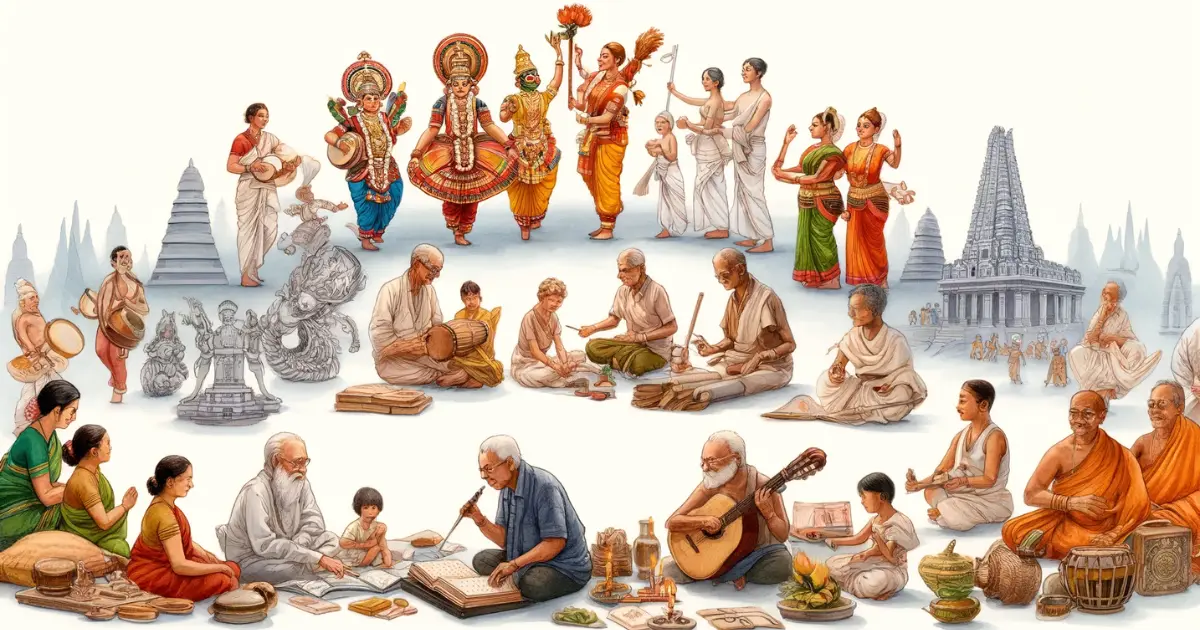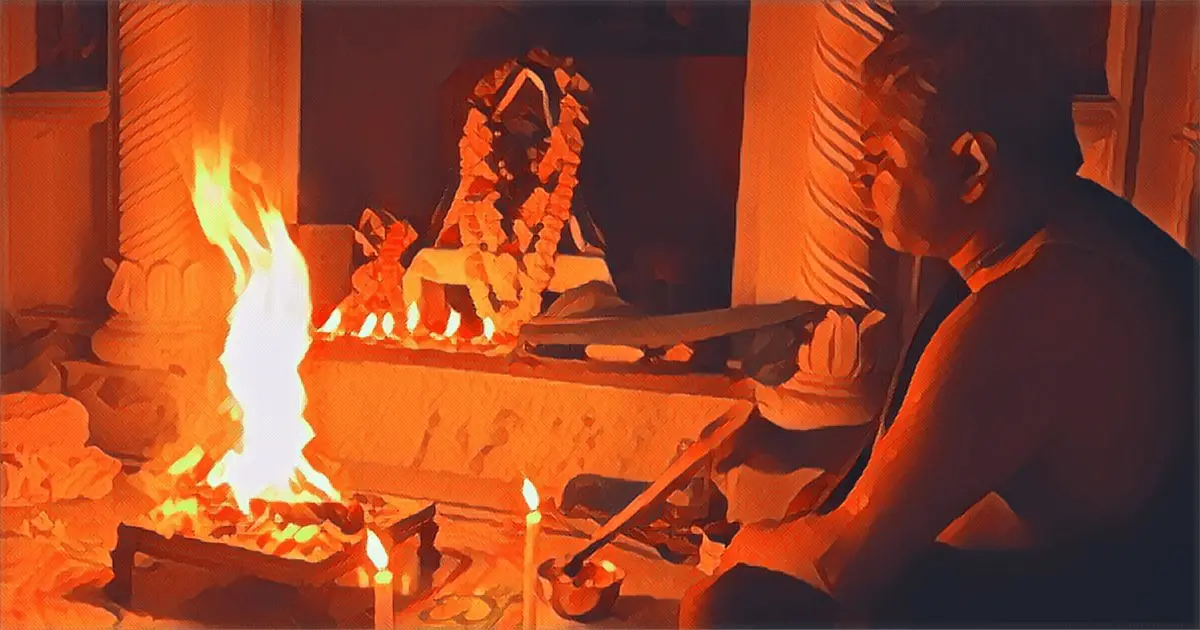History is an important teacher. Amongst other things, it provides valuable lessons on the organisation of human society, including the various methods of its upkeep, namely statecraft. The nitty gritties of governance aside, humans universally tend to gravitate towards those governments which uphold the values of rule by law, order and wisdom1. Historically, the land of Bhārata has produced many illustrious rulers such as Ikṣvāku, Bharata, Raghu, Rāma etc. tracing all the way back to Svāyambhuva Manu2. All of their reigns represented the zenith of these ideals. In comparison, the constitutional journey of our nation has been the length of a nimiṣa, an eye blink, yet it is revered today as the best thing to have happened to us. It is highly improbable that a society where the rule of law permeated to every strata during its golden age had never toyed with the idea of a lawbook such as the Constitution. Contrarily, the compass that provided a consistent bearing to a large number of monarchs and republics in this land, derived from a much higher source: Ṛta embodied through Dharma and encoded in our śāstras.
Facing the ravages of time, our country has been subjected to various imperialistic dominations which thrust different forms of governance on us, including the constitutional form of government. Despite such impositions however, many attempts have been made to chart a forward looking constitution based on the timeless ideals recorded in our śāstras. Although not entirely anchored in the consciousness of this land due to his English education, Raja Sir T Madhava Rao’s ‘Hints on the Art and Science of Government’ stems from such an attempt to draft a constitution for native princely states. Due to unfavourable circumstances then for implementing the said constitution, he had to settle for formulating his ideas as a lecture series, which he delivered to the young Maharaja of Baroda, Sayaji Gaekwad in 1980.
The book ‘The Progressive Maharaja’ by Rahul Sagar3 does a commendable job of compiling the lecture series and giving us the background of one of the finest statesmen of the 19th century. The word progressive carries in itself various connotations and meanings. Although it suggests a break from the past, and was necessitated in its origin due to very different circumstances4, Rao’s ‘progressive’ was a reinscription of past values in present times through a practical approach. Influenced greatly by European thinkers of that time, Rao envisioned a monarchy on the lines of the British empire, but with aesthetics suitable for the native state.
The book contains many formulations on how to govern as a king, so as to ensure a just rule for the people along with name and fame for self and posterity. Although Madhava Rao was a British loyalist, he could be said to have been a constitutional patriot and pragmatic person. Like the Sadhu who tells the protagonist in Ānandamaṭh5, that the time has not come yet for overthrowing the British, and it is in the benefit of India to be under British rule, Rao tutors Sayaji that he must under no circumstances do anything to antagonise the British, for his rule may come under jeopardy otherwise. He similarly castigates the newly formed Congress for demanding unreasonable rights while having no experience of governance. Despite this he does not let his politics cloud his judgement of statecraft. Rather, he lays down a brilliant framework for the native states to employ and become role models. His enormous clarity while devising the lectures is commended by Frederick Elliot, the official tutor of Sayaji, who says that Rao’s logic is impeccable and his flow while penning down the lectures does not betray any second thoughts.
Rao’s hints establishes itself in an entirely materialistic worldview with no preferential treatment towards people of any religion. It doesn’t seek to cultivate any morality in the people through the instrument of religion/dharma, and that is its biggest departure from the śāstras. Rao believed in the power of modern Western education to foster values of a good citizen, and the power of law enforcement to check deviants.
But by asking the king to champion the laws by subjecting himself to it, he brings in the higher śāstra based injunction of law being the King of Kings.
The fruit of Madhava Rao’s labour however did not turn out as expected, for the Gaekwad incorporated some, but ignored a large number of hints which Rao had suggested. Although Sayaji supported the rising nationalistic fervour and also aided the freedom fighters, he spent a large amount of his time chasing pleasures and ignoring the affairs of the State. This led him to an unenviable situation where he was caught off guard when people demanded representative government post the 1919 Montagu Chelmsford reforms6. Despite these setbacks, Hints by Rao remains a useful guide on the issue of statecraft and provides valuable insights on the balance of Westernisation with tradition.
Listed below are few of the various tips on statecraft he gives the young Maharaja.
The foremost duty of the ruler is to promote the happiness of the people.
This is the underlying theme of each lecture delivered by Madhava Rao, and it is not a non practical advice, for the ruler who doesn’t heed the plight of his people seldom remains in power for long. The śāstras also mention the same, though through a non secular lens. The mandate of the ruler is to uphold Dharma, dharma being the tangible manifestation of Ṛta (The principle which guides the flow of the universe and all actions towards sṛiṣti, sthiti and layā) in human society.
Rao elucidates that the happiness that people enjoy is of two kinds: Individual i.e those earned through self endeavour and merit; and secondly, State secured happiness. The ruler must ensure that people are guaranteed the State secured happiness such as access to good health, infrastructure, sanitation, security and the like. This allows people to pursue their own individual happiness without any hindrance, and also promotes the longevity of the rule.
The same advice applies to the ruler as well. S/he must make allowance for their own happiness as well and not be bogged down by the responsibilities of ruling. For this, effective delegation of work is required, which in turn requires deputing capable individuals as the heads of various departments, ministries and undertakings. This is serious business and careful thought must be spent on selecting the best possible people for the tasks. This can be achieved by not giving in to biases and partiality. Placement of familial relations at the helm should be avoided, except for when they show their capability for the task. Real knowledge, practical experience and love of truth should be the trademarks which the ruler must seek out while making such appointments.
The sovereign should create and maintain various public works departments, schools for education and hospitals for healthcare. Police, complemented with military force, should be well maintained and used exclusively for the benefit of the people. In addition, the ruler must establish a strong judiciary which delivers speedy and complete justice, and the ruler must refrain from interfering with its proceedings.
Apart from the lessons on statecraft, Rao lists down a plethora of personal conducts for the ruler, for honing his skills for an effective rule.
The ruler should give in neither to flattery, nor to criticism. S/he must learn to distinguish between a well wisher and an intriguer/flatterer. The test that he lays out for the Maharaja to apply is to check whether the person is arguing against a method or a person. A well wisher will criticise a measure whereas an intriguer generally complains against the person implementing the measure. Also, the ruler must not give in to anger, for decisions taken in anger, or words spoken, can have an adverse impact on the reasoning capacity of the ruler, as well as his reputation. If the king feels at any point that he is being overcome by anger, he should control his tongue and distract his mind.
The king should have a high ideal of duty, and must be a role model for his citizenry to emulate (Yathā Rājā Tathā Prajā). Additionally, the rājā should be firm but not obstinate. To distinguish between the two, the sovereign must surround himself with good, competent people. Firm rulers know how to select their men. Any person promising quick fame and adulation must be shunned. Being patient and consistent, and doing good work steadily, constantly and unostentatiously is the best method to attain lasting fame, says Rao.
Statesmanship is a series of compromises. So one must be firm but also flexible. Additionally, Rao advises the Maharaja to avoid stress by not unnecessarily interfering with any department’s handling of cases deputed to them. In the same vein, all the decisions must always be based on reason. To succeed in any endeavour, the king must visualise the end goal very clearly, consider the best means and forecast all possible difficulties.
Finally, Rao advises the king to not neglect his private study, and to always strive to acquire useful truths. The king is asked to keep up with the latest developments, parliamentary speeches, good literature and elevating ideas. Newspaper opinions may be skimmed for constructive criticisms, but fluff or derogations must not be attached much weight to.
These hints by Madhava Rao truly illustrate the reason for him being hailed as a foremost statesman of nineteenth century India. While there may be differences over Rao’s subservient attitude towards the British and his lack of incorporation of more Dhārmika elements in it, it is irrefutable that Rao drew from a vast ocean of experience and acquired knowledge. These invaluable Hints serve as an important beacon for the do’s and don’ts of statecraft and will help in spreading the general qualities of leadership at large as well.
Endnotes
- DiMichele T. (2017). Plato’s Five Regimes. FactMyth.
- Pandey A. (2021). Purāṇas as the Source for a Chronology of Indian History. INDICA.
- Sagar R. (2022). The Progressive Maharaja: Hints on the Art and Science of Government. Hurst Publishers.
- Milkis, S. M. (2022, September 15). Progressivism. Encyclopaedia Britannica.
- Chatterjee B. C. (2006). Anandamath (R. Basanta, Trans.). Orient Paperbacks. (Original work published 1882)
- Britannica, T. Editors of Encyclopaedia (2015, December 7). Montagu-Chelmsford Report. Encyclopedia Britannica.







